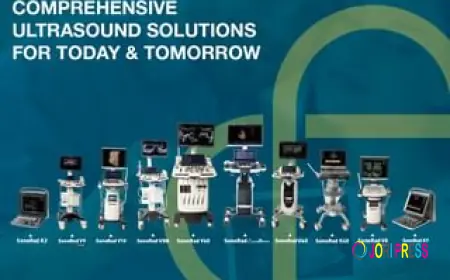Is Accelerometer Sensor Digital Only? Can Vibration Testing Equipment Test Cars?
TME Systems specialize in marketing, distribution, application, and servicing broad-based high technology products. We firmly believe that the business’s success is pivoted by our team of experienced and dedicated employees, together with the support of our partners and customers, backed by a strong technical sales and engineering team.

An accelerometer is a measurement instrument that is used to measure acceleration, which is the rate of change of velocity. Basically, it detects movement and position. The information gathered will help to identify an object that is either at rest, in motion, or under a gravitational force.
These are capable of measuring both linear acceleration (linearity) and, in some cases, angular acceleration (rotation). They can be used in consumer electronics and industry purposes and are therefore indispensable due to their versatility.
Why Accelerometers Are Essential in Modern Devices
Almost all modern gadgets have accelerators, such as:
- Smartphones, tablets (screen rotation, gesture detection).
- There are wearables (step counting, fitness tracking).
- Vehicles (airbag deployment, stability control)
- Motion-sensing game controllers
They are also versatile, and they cannot be ignored in consumer and industrial electronics.
Working Principle of Accelerometers
Accelerometers, especially MEMS (Micro-Electro-Mechanical Systems) accelerometers, detect acceleration by the change in capacitance or resistance as a result of the motion of a small internal mass.
How Analog Accelerometers Work
The analog accelerators generate a voltage that is proportional to the acceleration being applied. As an example, 0g will give 2.5V, +1g and 1g will give 3.0V and 2.0V respectively. This output is easy to read, though it may be susceptible to electrical noise.
How Digital Accelerometers Work
Digital accelerometers, however, internalize a conversion of the measurements of acceleration into digital data through an ADC (Analog-to-Digital Converter). They also transmit such data via digital interfaces such as I2C, SPI, or UART, and thus they can be easily integrated with microcontrollers and other IoT devices.
Is Accelerometer Sensor Digital Only?
No, accelerometers sensors Singapore are not all digital. They are available on a digital and an analog basis. The output of analog accelerometers is a continuous voltage (dependent on acceleration), whereas digital accelerometers give processed results via interfaces such as I²Cor SPI, and are therefore easier to combine with microcontrollers and digital systems. They are both of different uses.
Applications Where Analog Accelerometers Are Still Used
Analog accelerators are still essential in:
- Industrial vibration measurement.
- Automotive crash detection
- Aerospace control systems
- Scientific instruments of research
How to Identify Whether an Accelerometer Is Analog or Digital
1. Checking Datasheets and Model Specifications
The first thing to do is to look at the datasheet of the sensor. When it lists an output voltage range, then it is analog. When it talks about I2C and SPI communication, it is digital.
2. Observing Output Behavior Using an Oscilloscope or Microcontroller
The accelerator is connected to a microcontroller. Directly observed a different voltage is analog. In case you need to read packets of digital data, it is digital.
Advantages and Disadvantages of Each Type
Advantages of Digital Accelerometers
- Interfaces easily with modern systems.
- Better noise immunity
- Has the ability to incorporate built-in filters and calibration
Advantages of Analog Accelerometers
- The lower latency of response.
- Continuous real-time signal out.
- Superior to high-frequency vibration measurements
Understanding Vibration Testing Equipment
Vibration testing instruments are crucial in testing the structural integrity of the mechanical parts and their longevity. Such machines recreate the actual vibration in the real world and model the circumstances in which the products are transported, operated, or consumed. The essence is to determine the possible lines of failure before the delivery of products to customers.
Importance of Vibration Testing in Automotive Engineering
Vibration testing does not only involve comfort in the automotive industry, but also safety, reliability, and compliance. It allows engineers to estimate the performance of the components during the years of operation and guarantees that all the parts are of high automotive quality when the vehicles are released to the roads.
Why Vibration Testing Is Important in the Automotive Industry
There are far too many sources of vibration to which automobiles are exposed - engine working, road curve anomalies, etc. These vibrations may also cause material fatigue, noise, and even safety issues unless they are tested.
Detecting Structural Weaknesses
Vibration testing aids in determining in which areas failure may occur, e.g., cracks in the chassis, loose fasteners, or not very strong suspension components. The data can be utilized by engineers to reinforce the designs before mass production.
Enhancing Ride Comfort and Safety
Automakers can modify the suspension components, fine-tune the cabin insulation, and make the rides more comfortable by re-creating the conditions on the road. This will not only improve the comfort of the driver but also make the vehicles very reliable in the long run.
Can Vibration Testing Equipment Test Cars?
Car testing can be done using vibration testing equipment. It tries to replicate the real-world road and operational environment to test the durability of vehicles, reliability of the components, and integrity of the structure. Production engineers have it to detect potential faults, improve safety, and work on suspension systems, as well as to check the operation of engines, electronics, and other important automotive parts.
How Cars Are Tested Using Vibration Systems
1. Pre-Test Setup and Mounting
To evaluate the part or the vehicle, the engineers securely attach the part or the vehicle to the vibration table using fixtures that imitate the actual mounting sites. The sensors are wired to vital areas to monitor the acceleration and movement.
2. Running the Vibration Simulation
Based on data on a real driving situation, the vibration equipment recreates those vibrations, sometimes for as long as hours or days. This is aimed at increasing the rate of aging to expose the wear and tear over a long period.
3. Data Collection and Analysis
Engineers examine sensor data after the test to identify abnormalities. The results help in the design of the cars, the choice of materials, and the general polishing of the cars.
Applications of Vibration Testing in the Automotive Industry
In the automotive sector, vibration testing will guarantee durability, cut down noise and vibration to improve the comfort of the cabin, and ensure safety. The components, such as airbags, sensors, and control modules, are also tested to ensure that they perform and can be used in the real world within the driving conditions and under extreme stress conditions.
Benefits of Using Vibration Testing Equipment for Cars
Reducing Warranty Claims and Failures
The manufacturers will be able to avoid the expensive recalls and sustain customer loyalty because the defective products are detected before production.
Enhancing Vehicle Comfort and Reliability
Refined vibration response enhances ride quality and general driving experience, which is a major selling feature in contemporary cars.
Supporting Regulatory Compliance and Quality Assurance
The requirements of automotive testing standards like ISO 16750 and SAE J1211 are to perform vibration tests to certify the component safety and durability.
Conclusion
The use of accelerometers and vibration testing devices is of utmost importance in today's technology and automotive engineering industries. They promise accurate motion detection, product lifetime extension, safety, and performance enhancement. These tools help the sectors to create reliable gadgets and vehicles that can withstand harsh environments.
What's Your Reaction?
 Like
0
Like
0
 Dislike
0
Dislike
0
 Love
0
Love
0
 Funny
0
Funny
0
 Angry
0
Angry
0
 Sad
0
Sad
0
 Wow
0
Wow
0
















































